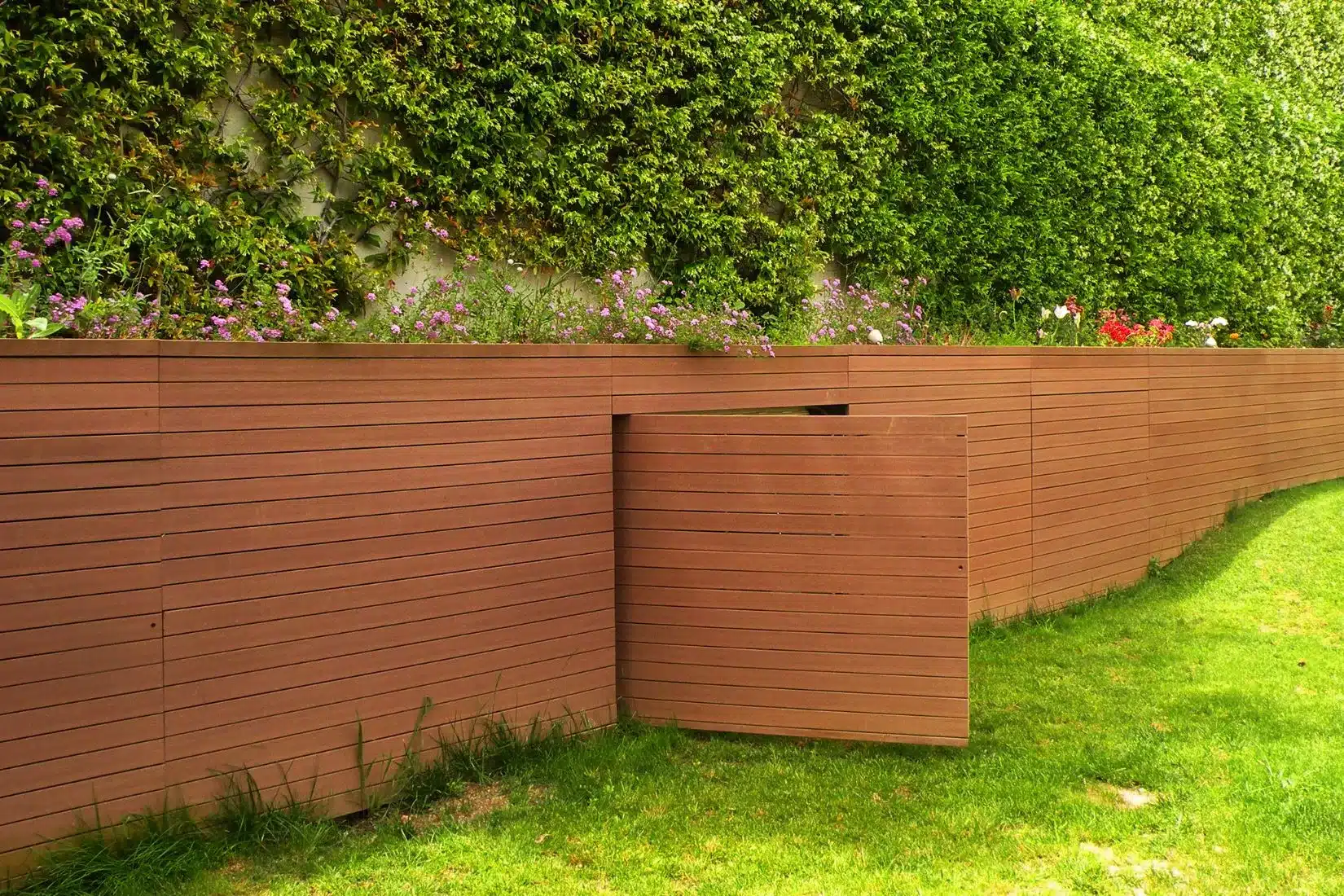Nature has found new ways to enter our homes. In this constantly evolving context, vertical gardens have become an accessible trend for those who want to enjoy greener, more sustainable, and more aesthetic outdoor spaces.
What exactly are vertical gardens?
Vertical gardens are living walls that bring freshness and dynamism to any space and combine beautifully with warm, durable, and sustainable surfaces such as VISENDUM® WPC decking
This pairing – vertical garden and decking – not only enhances the look of a space but also creates a functional and long-lasting design, especially when using innovative materials like composite wood, which resists humidity, temperature changes, and the passage of time.
In the following sections, you’ll discover more about what a vertical garden can be, why it has become so popular in recent years, and most importantly, how to integrate it with outdoor decking to create a unique and sustainable environment.
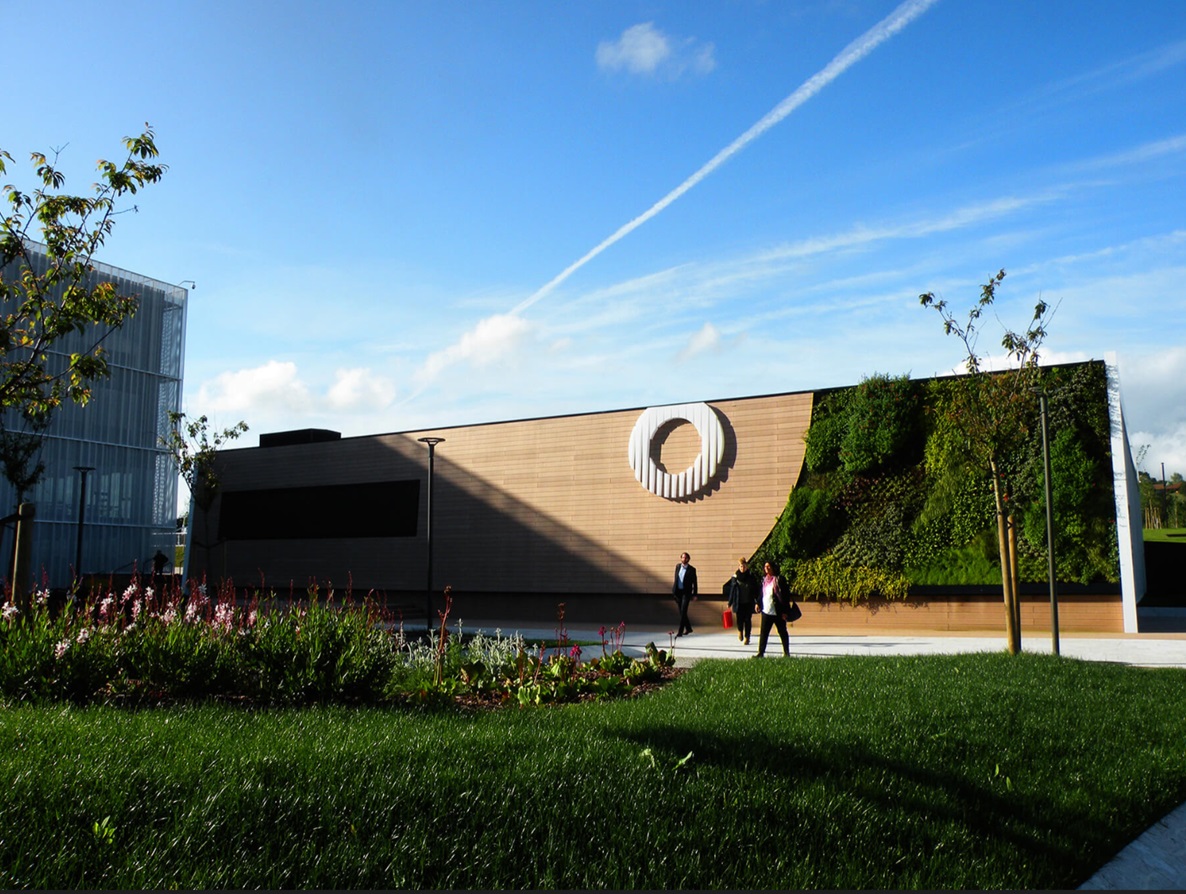
Vertical Garden: Much More Than Just Green Walls
A vertical garden is not just a wall covered with plants. Behind it lies a whole technical system designed to allow vegetation to grow vertically: modules, special substrates, or even hydroponic systems with integrated irrigation and drainage.
Thanks to this, it’s not limited to climbing plants; you can grow a wide variety of species.
Its value goes far beyond aesthetics: it improves air quality, acts as a thermal and acoustic insulator, and helps reduce the urban heat island effect.
In residential settings, it brings warmth and transforms a terrace or garden into a true natural retreat.
Current Trends in Vertical Gardens
Among the most notable trends for the coming year are smart modular designs that allow irrigation and fertigation to be controlled from a mobile device, making both maintenance and water efficiency easier.
There’s also growing interest in native and sustainable vegetation, using species adapted to local climates that require less maintenance and consume fewer resources.
LED lighting has become another common feature, used to highlight textures and plant volumes at night, extending the use of the space beyond daylight hours.
The versatility of these systems also means vertical gardens can be installed in small terraces, transforming urban patios into genuine green lungs with just a few square metres of wall.
The rise of biophilic design reinforces this trend: multipurpose spaces, natural materials, and vegetation as the main feature.
Movements such as eco-brutalism, which softens mineral surfaces with greenery, or green drenching, a visual immersion in layers of vegetation, aim to surround the user in a natural environment. In every case, sustainability and efficiency set the direction.
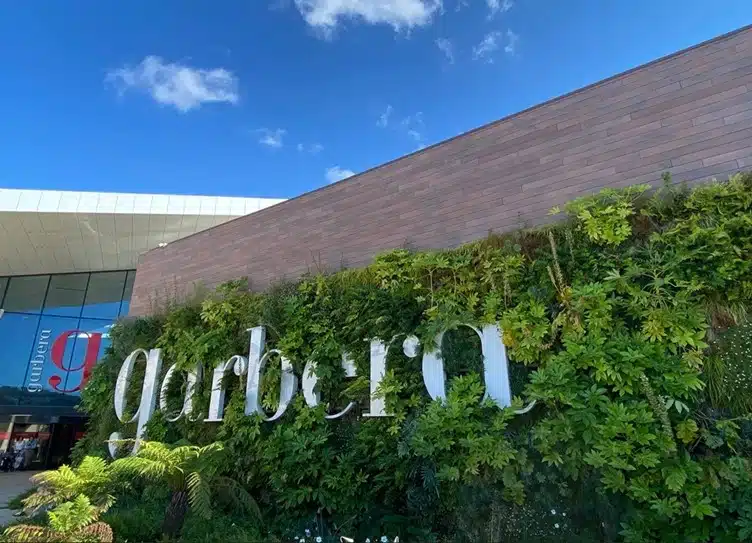
Smooth Transitions Between Garden and Decking
With natural wood decking, transition areas can be more delicate, as humidity may accelerate wear or staining.
By contrast, composite wood like VISENDUM® maintains its dimensional stability and appearance even in areas with greater exposure.
Irrigation and Drainage: Keeping Water Under Control
Water is a key factor in any outdoor vertical garden. The ideal setup includes a homogeneous, automated irrigation system, either drip-line or hydroponic modules.
Equally important is ensuring that excess water is channelled to a drainage point, never directly onto the decking. This protects the surface and extends its lifespan.
Timers, filters, and moisture sensors can simplify maintenance tasks.
The timeless finishes of VISENDUM® help harmonise the overall design, whether with warm tones for a Mediterranean style or greys for a more contemporary aesthetic.
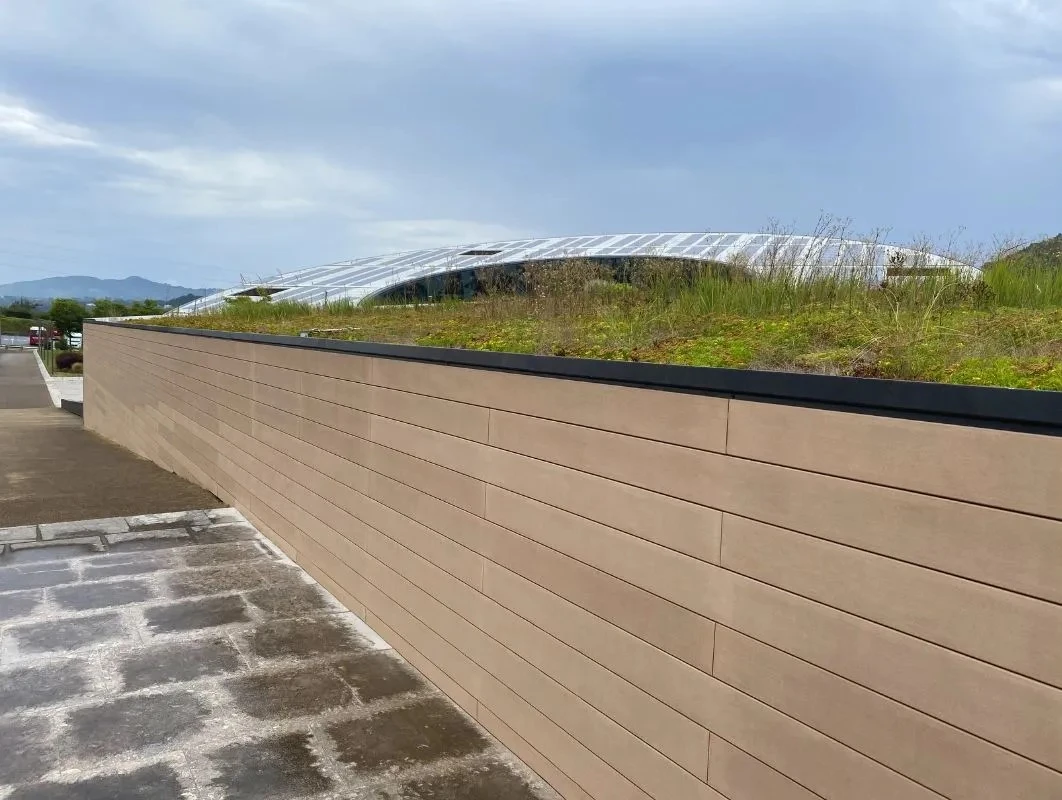
Construction Systems to Choose From
There are two main system types:
Substrate modules, which are versatile and allow compositions with perennials and small shrubs, though they add more structural weight.
Felt or hydroponic systems, which are lighter and offer a dense, uniform look but require more precise irrigation and fertigation management.
In demanding climates, it’s advisable to reinforce water storage capacity and design proper drainage to maintain plant stability during warmer months.
Choosing Species According to Orientation and Climate
Plant selection depends directly on orientation and microclimate.
On north- or east-facing walls, ferns, heucheras, compact ivy, and shade-loving perennials work well.
On south- or west-facing façades, it’s best to use hardy Mediterranean species such as thyme, santolina, or ornamental grasses, along with succulents in well-drained modules.
Remember that many low-water species still need more frequent watering during their first year of establishment.
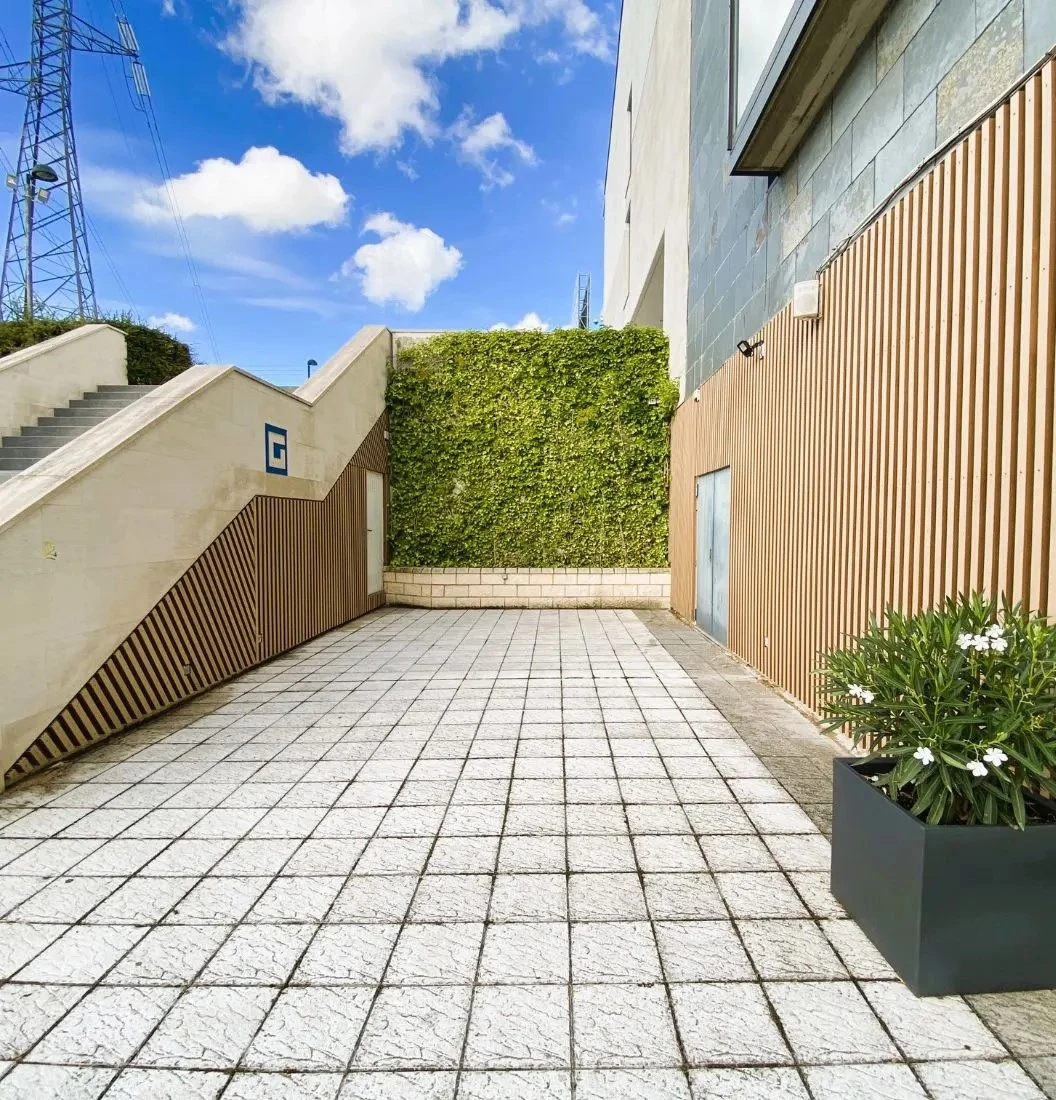
No Extra Treatments Required
A vertical garden is not a set-and-forget element; it should be designed for easy maintenance.
It’s best to include accessible panels or removable plinths for simple monthly checks of drippers and filters, light pruning, and seasonal plant replacement.
With VISENDUM® composite decking, maintenance is simple: a quick clean with water and mild soap is enough to keep it looking perfect — no extra treatments required.
Colour Palette and Final Style
A cohesive aesthetic is the finishing touch to any project:
With brown or apricot decking, warm greens and white or cream blooms enhance a Mediterranean and natural feel.
With grey decking, cooler greens and silvery plants like festucas or helichrysum fit better in a contemporary design.
In small patios, a vertical garden enhances proportions, while decking ensures visual continuity and comfort.
Tips for Long-Lasting Integration
If you’re considering integrating a vertical garden next to your outdoor decking, keep a few practical aspects in mind:
Plan a good irrigation and drainage system so water doesn’t fall directly on the decking.
Choose species suited to the sun orientation.
Leave a small transition gap between the two surfaces for easier cleaning.
With these tips, both elements will work perfectly together, and the visual result will be stunning.
VISENDUM®: The Perfect Base for Your Project
VISENDUM® is designed to be the ideal companion for a vertical garden.
Made from 70% recycled wood, free from PVC and toxic compounds, and resistant to humidity and temperature changes, it provides the stability your outdoor flooring needs to stay flawless for years.
With timeless finishes and a 25-year warranty, our Composite Wood® and Composite Decking® offer the peace of mind of a European, sustainable, and durable product — so you can focus on what really matters: enjoying your garden, terrace, or pool, surrounded by nature and comfort.
